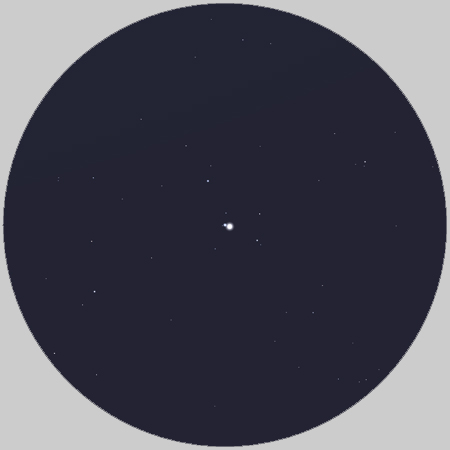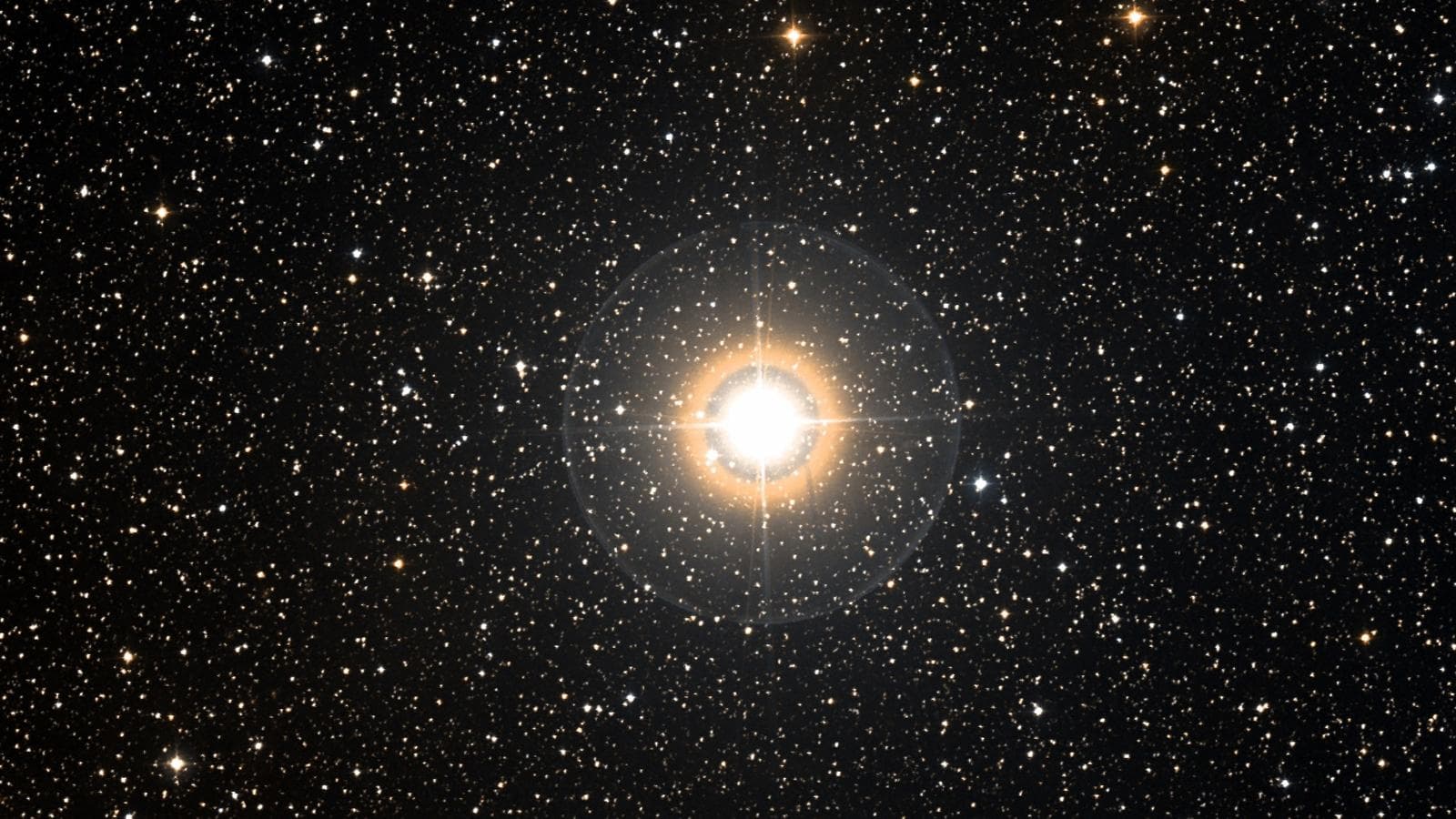Eta Cassiopeiae
A detailed guide to finding / observing the double star
TOTS #2 is a detailed written and video reference to finding and observing the double star Eta Cassiopeiae in the constellation of Cassiopeia. This guide is ideal for beginners, but many advanced amateur astronomers may find it useful to help locate this double star with almost any telescope set up. This tutorial will help you locate these two galaxies whether you have a magnified finderscope or a red dot finder.
Visitors who are new to this site may wish to get started here or if you are already familiar with telescopes and equipment but aren't sure where to get started, check out the Shapes in the Sky section on this site. That will help you get in the right area of the night sky to locate this object.
Find Eta Cas in the sky
Eta Cas is a double star within our own Milky Way galaxy. It is quite close to Earth, at just 19.4 light years, so the photons reaching your eye from the star tonight are under 20 years old. What makes Eta Cassiopeiae so interesting is that the primary star is a G-class star much like our Sun. Our Sun would look similar from Eta Cas if we were peering back it it from there. It also has 97% of the mass, and is 101% of the radius of our Sun. It is much like a twin of our host star in many respects, though it is likely about a billion years older. Here is how to locate it.
Observing tips:
Eta Cassiopeiae isn't too difficult to find (see video above). The challenge is that for smaller telescopes, the difference in magnitude between the two stars is 4 magnitudes, so the dimmer star can take a little bit of patience to spy. But once centered, the split isn't difficult. However, it will look better in a medium magnification view.
The key is to look for the color difference. While the primary is a G-class star very similar to, and not much larger than, our Sun, the secondary is a K-class star. But being much dimmer, the color contrast looks much stronger to some observers. According to Robert Burnham's "Celestial Handbook," some see gold/purple, yellow/red, or even topaz/garnet.
What do you see?
Useful filter(s): None.
What should I see?
Photographs show much more of night sky objects because they can capture more photons for longer periods of time. As such, sketches of deep sky objects are perhaps one of the better ways to see what you might expect to observe at the eyepiece, because it is a rendering of what another observer's view was. Here's some links to some sketches of this object:
Because telescopes and observers are all different, here are some alternate sketched/drawn views of Eta Cassiopeiae:
Jeremy Perez, using 6" reflector at 240x
Michael Vlasov, using 8" reflector at 80x
Below is an approximate view of Eta Cassiopeiae as seen with a 70mm telescope at 150x magnification, and a 0.35 degree telescopic field of view.
Demonstrates how view would look with objects on the meridian using a refractor telescope and a star diagonal. Other telescopes or object sky positions may incur a differing view. Various magnifications, eyepieces, telescope focal lengths and other variables may alter the view compared to this one. This is a representation only intended to help the observer get some idea what they may see at the eyepiece. Extreme local light pollution may block the view entirely.

Details of Eta Cas
Type: Double Star
Distance: 19.4 light years
Separation: 12.7 arc seconds
Apparent magnitudes: 3.4, 7.5
Right ascension: 0h 49m 7.6s
Declination: +57 48' 57"
Looking for other nearby Telescopes On The Sky objects? Here's some to consider:
NC663 (open cluster)
More about this constellation
Name: Cassiopeia
Abbreviation: Cas
Genetive form: Cassiopeiae
Common names: The Queen, Ethiopian Queen
Associated asterisms: Five brightest stars form a "W" or "M" shape depending on the time of night/year
Original 48 of Ptolemy: Yes
Area by size: 598 square degrees
Relative size: 25 out of 88 (Perseus is next larger, Orion is next smaller)
Telescopes On The Sky objects that can be found in this constellation: Eta Cassiopeiae, NGC 663, NGC 457
Brightest stars, in order of magnitude
First lists the Bayer designation, then the "traditional" star name (often Arabic, but not always - see each star's notes for details).
-
α (Alpha) Cassiopeiae (Schedar, Shedir) magnitude 2.25, the 71st brightest star in the sky. The traditional name is derived from the Arabic word صدر şadr, meaning "breast," appropriate for a queen constellation.
-
β (Beta) Cassiopeiae (Caph) magnitude 2.27, is the 73rd brightest star in the sky. Its name comes from a pre-Islamic Arabic term al-Kaff al-Khadib which means "the stained hand" (referring to stain from henna). .
-
γ (Gamma) Cassiopeiae (Tsih, Navi) magnitude 2.39, is 82nd brightest star in the sky. However, it is also somewhat variable, dropping as low as 3.0, and as bright as 1.6. The star has no traditional Arabic name. "Tsih" comes from Chinese, derived from the word "whip." A nickname was applied to the star by American astronaut Gus Grissom; his middle name was "Ivan" and spelled backwards, it is "Navi."
-
δ (Delta) Cassiopeiae (Ksora, Ruchbah) magnitude 2.68. It is an Algol-type eclipsing variable star, with a period of 2 years/1 month, and varies by 0.1 magnitude. The traditional names are from the Arabic word ركبة rukbah meaning "knee."
-
ε (Epsilon) Cassiopeiae, magnitude 3.35. It has no traditional Arabic name assigned to it.
-
η (Eta) Cassiopeiae, magnitude 3.45. It has no traditional Arabic name assigned to it. It is a very Sun-like star in size, mass and luminosity.

